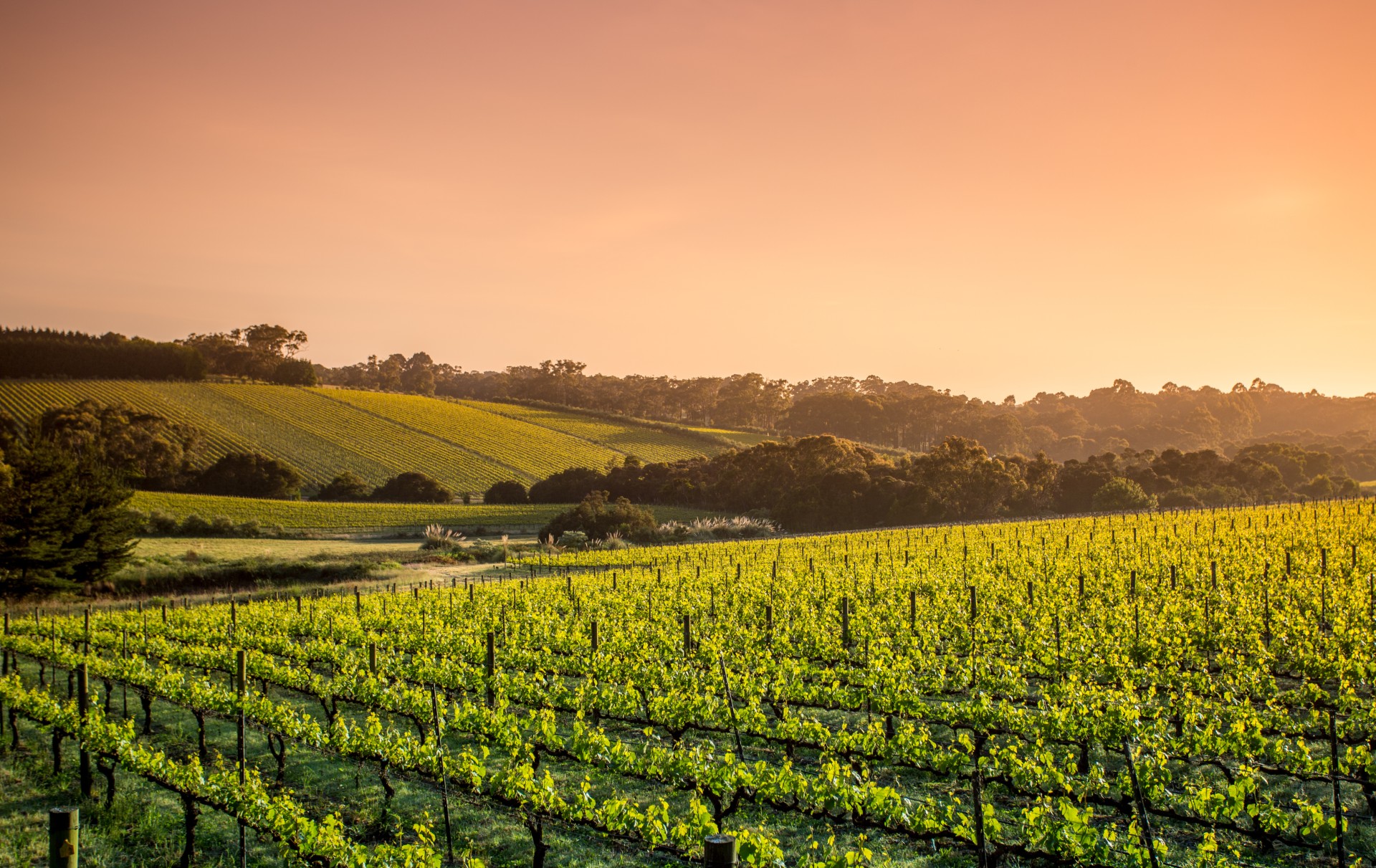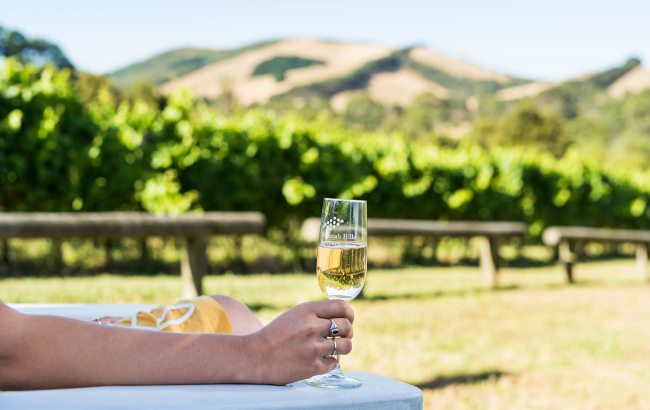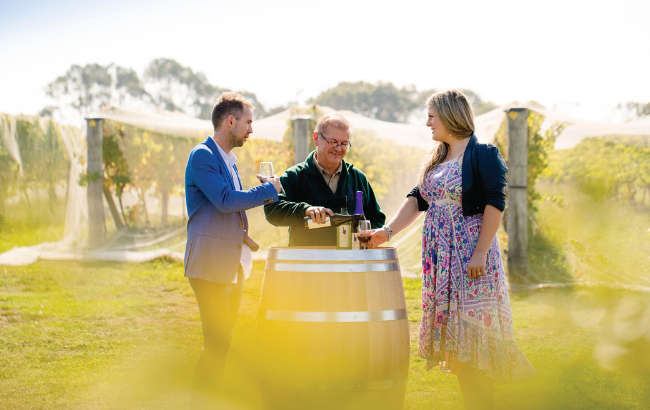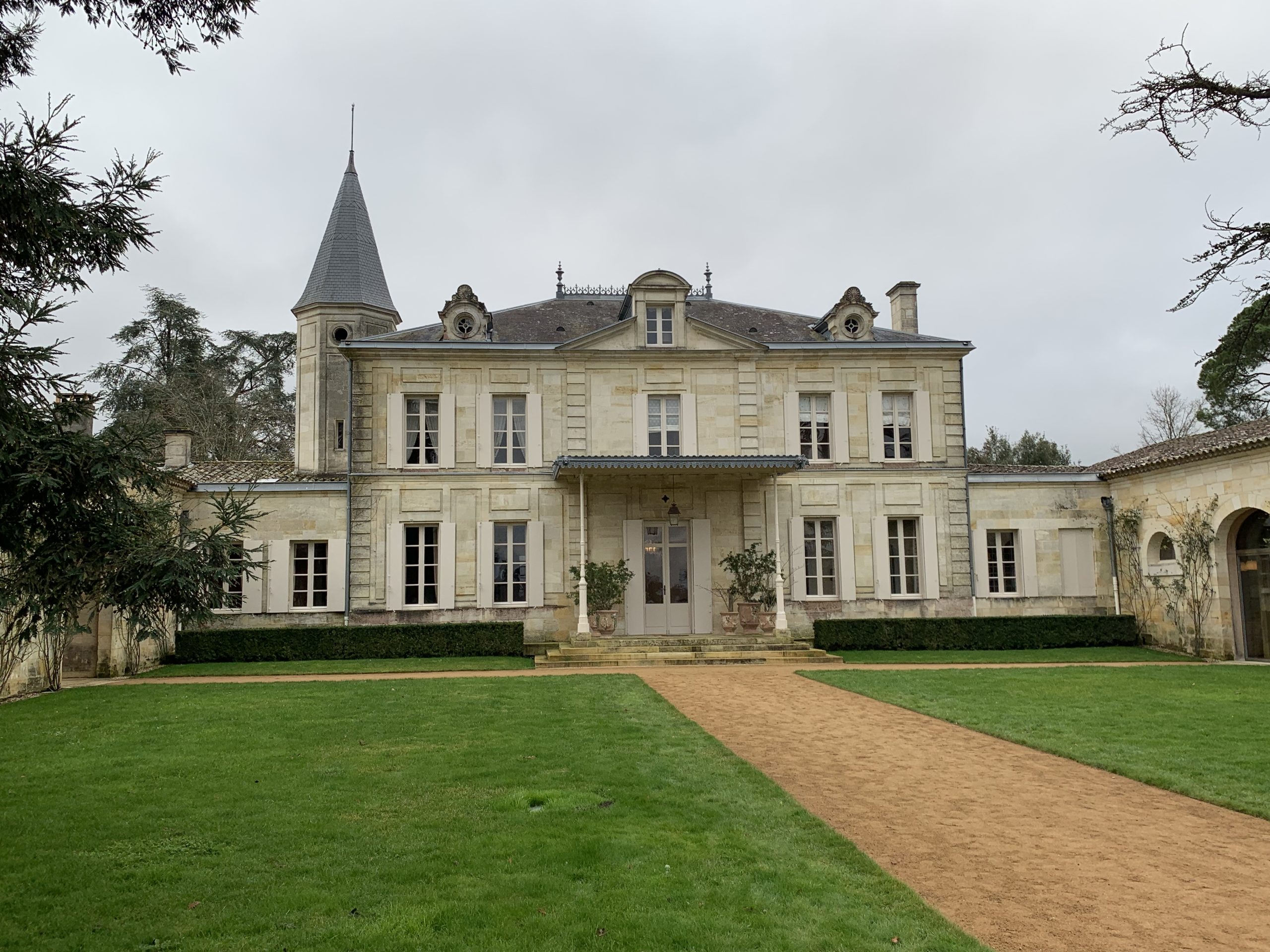Victoria stands out as a region that offers far more than the usual slate of ‘international varieties’ with celebrated producers using a host of alternate grape varieties. db investigates why its producers go against the grain.

Freedom is a rare thing in the world of wine. That is not to deny the agency of winemakers, many of whom make surprising decisions, for better or for worse. Yet many producers find restrictions placed on them, whether from appellation regulations, climate viability or historical precedent.
Victoria, Australia’s smallest mainland state, positioned in the country’s southeast, is remarkably free from such restrictions. Indeed, it is a positively liberating environment for winemakers.
What grapes are permissible? Anything you might wish to plant.
What suits the climate? A large range of grapes, given its varied number of unique microclimates.
What are the historical varieties of the region? With around 200 years of winemaking behind it – not to mention no vines before the arrival of European settlers – all styles are relative newcomers.
It is, in winemaking terms, a blank slate. Perhaps because of this, Victorian winemakers have a reputation for diverse varieties. There is certainly plenty of space for the usual suspects – the Chardonnay, Shiraz and Cabernet Sauvignon that make up more than half of Australia’s annual crush – but also for more niche varieties. Alongside the best known grapes of France are examples from Spain, Italy, and Portugal, as well as less famous French varieties.
So what is behind this trove of unusual varieties?
db looked to some of the region’s most influential producers to see why they have gone against the grain.
Unsung histories
Most of the world’s so-called ‘international varieties’ are French in origin, a reflection of the country’s influence as vines began to be exported around the world. Yet those 10 or so varieties showcase only a small sliver of France’s viticultural heritage.
They also offer a limited view of which varieties were initially exported around the world. In Victoria, several producers are preserving and championing the lesser known French varieties that have long populated the state’s vineyards.
Durif, for instance, is almost forgotten in its native corner or southeastern France, but its rich, inky wines have long thrived in Victoria and built a global brand – particularly in Rutherglen.
Or you could look to Tahbilk, the Victorian producer that dates back to 1860 and is this year celebrating 100 years of ownership in the same family. It has a wealth of old vines, including Victoria’s oldest Shiraz, an ungrafted plot from 1860. It also has significant plantings of Marsanne.
This variety from the south of France has never reached global fame in single varietal examples but, without the weight of history on it, Tahbilk has focused on it regardless and turned it into a flagship grape. Some of its plantings date to 1927, making it the oldest Marsanne in Australia.
It is not, however, a historical project. Tahbilk has grabbed attention and awards by innovating and driving quality forward, even without a famous grape to market. Its recent 2015 Centennial Marsanne, for instance, demonstrates the grape’s potential for serious, ageworthy wines. Tahbilk has put Marsanne unequivocally in the spotlight, something almost impossible in its French homeland.
All this is truly remarkable given Marsanne’s changing fortunes. At one point Goulburn, Victoria had Marsanne plantings to rival all of France, yet by 2012 its total had declined to less than 200 hectares. However, producers like Tahbilk, not to mention its neighbours who have followed suit, are proving the grape’s value – and that Victorian winemakers are prone to follow passion and quality rather than trends.

Turning to heritage
French varieties are just the beginning, rather than the limit, of Victoria’s viticultural range. As the perfect microcosm of that effect, King Valley in the region’s northeast has long been known for its more unexpected varieties, especially those from Italy. With a warm elevation and slopes that provide varied terroirs, King Valley’s conditions have many parallels with Italy’s finest wine regions.
Sometimes the story is as simple as you might expect. Dal Zotto certainly sounds Italian and has built a reputation on Italian varieties. No surprises, then, that founder Otto Dal Zotto grew up in Valdobbiadene, going on to found the winery in 1999. In planting the first Prosecco (Glera) vines in the King Valley, he took a leap of faith with unusual varieties.
Yet other experiences speak to the diverse approaches of Victoria’s winemakers. The two brothers who founded Pizzini Wines, for instance, were second generation immigrants, whose parents voyaged from Trentino in 1956.
Their agricultural journey did not begin, as at Dal Zotto, with an immediate reference to Italian heritage. The first crop and Pizzini was tobacco, followed by Riesling in 1978 to supply nearby large wineries. This was soon followed by other ‘international varieties’, before the first experimental plots of Nebbiolo and Sangiovese were planted in the mid- to late-1980s.
Although Italian white varieties followed in the 1990s – just as Pizzini started making its own wines – it was not until the early 2000s that Italian varieties became the central focus. Now under the second generation’s control, the team found new vineyard plots to plant with the finest Sangiovese, Pinot Grigio, Brachetto, Nebbiolo and Prosecco.
The path was therefore not as direct for Pizzini, but the results have been similar: two producers crafting renowned Australian wines that nod to emigration and an Italian homeland.
The inspiration to make better wine
Refreshingly, some of Victoria’s most unusual plantings reference neither estate nor family history. For plenty of winemakers, particularly as newer generations come through, the appeal in alternative grape varieties is the prospect of making better wines.
There is no better evidence for that than in the story of Don Lewis, A legend in the region’s wine trade, having spent decades at Mitchelton, he took a fateful trip to Priorat in 2004, followed by a journey to Piemonte.
Inspired by local varieties, he pivoted to specialise in Italian and Spanish varieties in Victoria. Aided by Narelle King, he created Tar & Roses, a brand named both for their partnership and the quintessential aromas of Nebbiolo. It was a decision born of winemaking passion and of an impulse shared by winemakers around the world: the need to craft the best possible wine. Unhindered by strict traditions of grape varieties, Lewis could satisfy that impulse in Victoria.
The state continues to break new ground even to this day. The 2025 harvest, for instance, is the first time that two northwest Italian grapes have been picked in Australia. Cornalin and Petit Arvine (which also grows in Switzerland), are a passion project of Mark Walpole at Fighting Gully Road Wines in Beechworth.
The long process has been ongoing since 2017. It first required permission from the Swiss and Italian governments to export the vines, since they are rarities in their homelands. A lengthy quarantine followed, after which they could be propagated by specialists before eventual planting.
A block of Shiraz would be far simpler. Yet for Walpole, recognising the appeal of unusual varieties in Australia, Cornalin and Petit Arvine offer an enticingly different proposition. Also, with their naturally high acidity, they can offer some degree of futureproofing in a warming climate.

Responding to a major threat
Indeed, for many growers and producers, futureproofing is key in their approach to unusual varieties. As well as offering exciting new flavours, many producers see varietal diversity as vital in adapting to climate change.
Stanton & Killeen, for example, has a long history of using Portuguese varieties, since its initial specialism was in fortified wine. Yet Natasha Killeen, the winery’s seventh-generation general manager, has gone further. For the past decade, she has expanded its white wines with native Portuguese varieties such as Alvarinho and Arinto.
Not only do these offer fine, exciting, mineral-charged wines, but they also offer greater resilience against climate change, being well suited to Stanton & Killeen’s Rutherglen climate.
At Chalmers, a similar search for climate adaptability led the family to Italian varieties such as Fiano, Vermentino and Nero d’Avola. Since the family began making its own wines in the early 2000s, it worked through French, Spanish and Italian grapes before finding those that best matched Victoria’s Mediterranean climates.
The winery is now encouraging other producers to follow in its footsteps, as Chalmers runs a leading nursery for Italian vines. Indeed, it was at Chalmers that those first vines of Cornalin and Petit Arvine were propagated. Such institutions are building the necessary infrastructure so that Victorian producers can continue to explore the niche and emerging varieties which may offer the greatest resilience in future decades.
Celebrating its potential
If there is a conclusion to be drawn, it is that Victorian winemakers defy categorisation. It is their unifying feature, as well as their strength, that each has its own narrative and its own reasons for selecting the varieties each grows.
A survey such as this can only scratch the surface. One could just as easily mention Brown Brothers and its pioneering Tarrango or the father and daughter duo surveying Fruilian varieties at Vinea Marson.
Yet thanks to the sheer range of narratives in Victoria, it remains exciting. With such an open-minded attitude, the possibilities in the state are limitless, with producers welcome to bring in new varieties as they see fit.
To take one final example, the Australian Alternative Varieties Wine Show is a firm fixture of more than two decades, hosted in Mildura Victoria. Although open to the whole nation, Victoria often leads the way, and last year was no exception. The region’s producers took home awards for a wide range of varieties, including Teroldego, Marsanne, Verdicchio, Alvarinho and Mondeuse Noir.
Chances are, if you can think of a grape variety, someone in Victoria is growing it, not to mention making quality wine from it. As ever more unusual varieties are introduced to the winemaking public, you can expect the innovative winemakers of Victoria to be leading the charge.

 Freedom is a rare thing in the world of wine. That is not to deny the agency of winemakers, many of whom make surprising decisions, for better or for worse. Yet many producers find restrictions placed on them, whether from appellation regulations, climate viability or historical precedent.
Victoria, Australia’s smallest mainland state, positioned in the country’s southeast, is remarkably free from such restrictions. Indeed, it is a positively liberating environment for winemakers.
What grapes are permissible? Anything you might wish to plant.
What suits the climate? A large range of grapes, given its varied number of unique microclimates.
What are the historical varieties of the region? With around 200 years of winemaking behind it – not to mention no vines before the arrival of European settlers – all styles are relative newcomers.
It is, in winemaking terms, a blank slate. Perhaps because of this, Victorian winemakers have a reputation for diverse varieties. There is certainly plenty of space for the usual suspects – the Chardonnay, Shiraz and Cabernet Sauvignon that make up more than half of Australia’s annual crush – but also for more niche varieties. Alongside the best known grapes of France are examples from Spain, Italy, and Portugal, as well as less famous French varieties.
So what is behind this trove of unusual varieties? db looked to some of the region’s most influential producers to see why they have gone against the grain.
Freedom is a rare thing in the world of wine. That is not to deny the agency of winemakers, many of whom make surprising decisions, for better or for worse. Yet many producers find restrictions placed on them, whether from appellation regulations, climate viability or historical precedent.
Victoria, Australia’s smallest mainland state, positioned in the country’s southeast, is remarkably free from such restrictions. Indeed, it is a positively liberating environment for winemakers.
What grapes are permissible? Anything you might wish to plant.
What suits the climate? A large range of grapes, given its varied number of unique microclimates.
What are the historical varieties of the region? With around 200 years of winemaking behind it – not to mention no vines before the arrival of European settlers – all styles are relative newcomers.
It is, in winemaking terms, a blank slate. Perhaps because of this, Victorian winemakers have a reputation for diverse varieties. There is certainly plenty of space for the usual suspects – the Chardonnay, Shiraz and Cabernet Sauvignon that make up more than half of Australia’s annual crush – but also for more niche varieties. Alongside the best known grapes of France are examples from Spain, Italy, and Portugal, as well as less famous French varieties.
So what is behind this trove of unusual varieties? db looked to some of the region’s most influential producers to see why they have gone against the grain.























































































































































